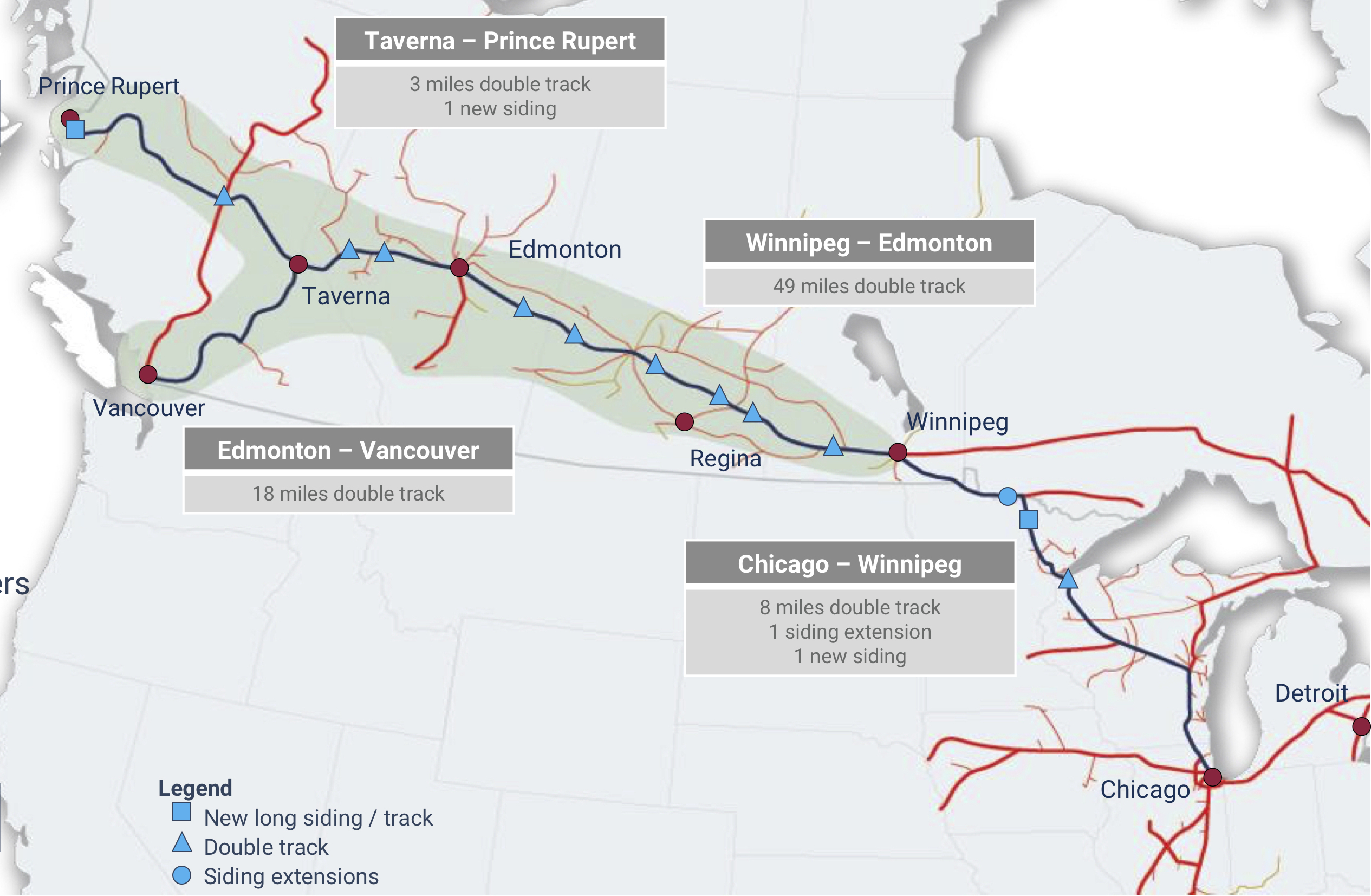CN has been growing quickly on its spine between Edmonton, Alberta, and Winnipeg, Manitoba, thanks to a rising tide of intermodal, agricultural, and energy related traffic that includes petrochemicals, hydraulic fracturing sand, steel pipe, crude oil, and refined products such as propane.
The pace of the growth caught CN off guard in 2017, when it coagulated in Western Canada after being short of crews, locomotives, and track capacity.
Last year CN spent $400 million to add 60 miles of double track and seven new or extended passing sidings in Western Canada, along with a section of double track and two passing sidings on the Winnipeg-Chicago corridor and eight yard expansions on both sides of the border.
The additional capacity, which came fully online in the fourth quarter, helped CN restore service to normal levels, CEO Jean-Jacques Ruest told analysts and investors on the railway’s fourth-quarter earnings call on Tuesday.
CN provided details on its 2019 mainline capacity projects during the call.
The railway will add 49 miles of double track in six segments between Edmonton and Winnipeg this year. CN added five sections of double track between the Prairie cities last year. Less than 150 miles of the 800-mile corridor — CN’s busiest — is currently double iron, but the railway plans to gradually double-track the route as traffic grows.
CN will add 18 miles of double track in two segments between Edmonton and Taverna, British Columbia, where the main splits into routes to Vancouver, B.C., and Prince Rupert, B.C. Last year CN added one section of double track on this section of its main line.
The line to Prince Rupert — the fastest-growing port in North America — will receive three new miles of double track, along with a new siding. Last year CN built five new sidings on this route, which this year will see increasing numbers of unit coal and propane trains bound for the port.
About two-thirds of the international containers that land at Vancouver and Prince Rupert wind up in Chicago. This year between Winnipeg and Chicago CN will add eight miles of double track, extend one siding, and add a new siding. Last year, the tally was two new sidings and one section of double track on this corridor.
All of CN’s key performance metrics showed improvement in the fourth quarter, even as the railway handled record gross ton-miles in Western Canada, Chief Operating Officer Mike Cory says.
The new track — along with a full complement of train crews and the arrival of 60 new locomotives — made CN more resilient with the onset of extremely cold winter weather, Cory says.
CN will receive an additional 140 General Electric locomotives this year. The railroad will return 130 leased units this spring as the new units arrive and winter weather departs, easing demands on the locomotive fleet.
The railroad has returned to normal levels of crew hiring in Western Canada.















And not only is Winnipeg not in Saskatchewan, but Taverna is not in Alberta (it’s in British Columbia).
People who work at TRAINS magazine should know ! that Winnipeg is in Manitoba !
It may well be the case that easing the bottle-neck at the Neenah “elbow” (on the map the right-angle turn West) is difficult, but unsure why.
We people of Ukrainian ancestry know where Winnipeg is. In fact, that’s why I went there. It’s a fantastically beautiful city, especially after it annexed St. Boniface several decades ago.
I think the reason that TRAINS-MAG is so confused is that the rail line between Winnipeg and Churchill, both in Manitoba, does in fact go through Saskatchewan.
PSR’s achilles heel. Growth